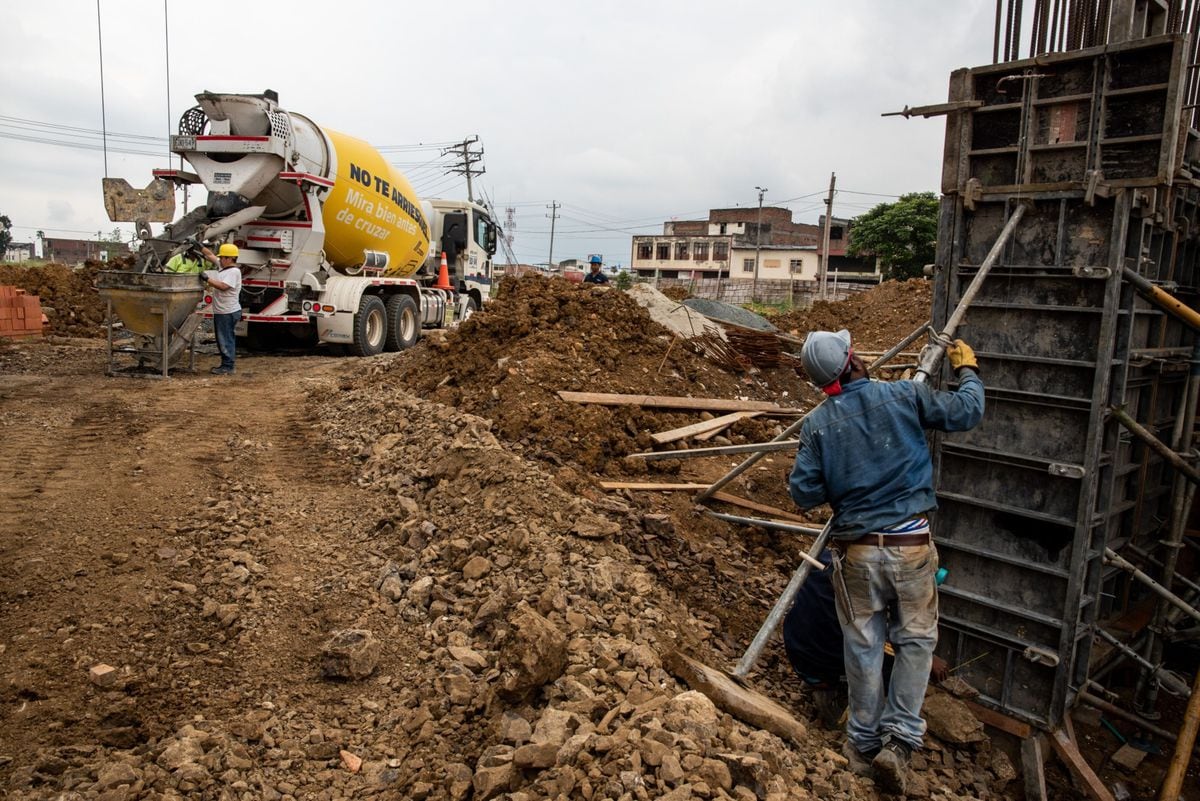Colombia reduced its GDP growth to an anemic 0.6% annually in 2023. The country narrowly escaped recession.
But the economy is far from taking off.
Some indicators denote signs of paralysis.
And to be navigating through a cycle of obvious weakness to reverse the situation this year.
The most worrying of them, according to data presented by the National Department of Statistics (DANE) and various analyses, is related to the dizzying drop of -24.8% in investment.
This is a setback that is not entirely surprising, but it leaves its mark on the confidence of investors and consumers.
In fact, the monthly report from the Fedesarrollo think tank in January compared the contraction in public investment with pre-pandemic levels and placed the gap at -33.9%.
A reality for which there are no simple explanations.
More so if you take into account that in 2021 and 2022 the rates were 7% and 11% increases, respectively.
Some keys, however, are found in the poor performance of housing construction and other civil works, which, combined, fell -6.1%.
It could be said that this Thursday's press conference by the director of DANE, María Piedad Urdinola, was one bitter pill after another for the left-wing Government, which is approaching its four-year term in Ecuador without having barely advanced the announced project of change. social.
Although it is true that the Colombian statistical department does not break down behavior between the private and public spheres, the experts' focus has illuminated the lack of leadership and state execution.
The reason is that the Government is the first facilitator and guarantor of the market on the ground.
Their task is to send effective political signals to spur investment, growth and create jobs.
Luis Fernando Mejía, director of Fedesarrollo, remembers that in 2015 investment represented 23.4% of GDP.
“This indicator measures the proportion between gross fixed capital formation [the item in national statistics that reflects investment] and the size of the economy.
Today it is below 18%, much lower than that of peer countries such as Argentina, Mexico, Chile or Peru,” Mejía details.
Briefly: the great engine of the economy, responsible for cutting poverty figures, stimulating salaries or cutting backlogs of roads in the countryside, is broken.
In this way, the doctor in Economics Hernando Zuleta remembers that high interest rates (the reference rate of the Bank of the Republic is 12.75%, and for almost all of 2023 it remained at 13.25%) have made access difficult. to credit, forming a round-trip bottleneck between public and private capital: “If people see that the works that were planned are not progressing, if there is no certainty about the future of the projects that were already contracted and that they are unlikely to come to fruition, the effect on investments is in any case negative.”
Zuleta outlines the global panorama of the sector, but points especially towards the public component: “There are no large infrastructure projects underway.
There is no progress on roads.
I am also not clear if the wall we are facing is the lack of capacity, will or experience of the Government to execute the resources.”
Some data from DANE, such as the increase in investment in machinery and equipment, provide sparks of hope.
More so if you take into account that this is a terrain conditioned by the rise in prices in international trade after the shock of the pandemic.
But back to the analysis of the complete photo, Luis Fernando Mejía highlights that the pace of construction of social interest and priority interest housing has been consistently bad after the health crisis.
And the Government has failed to comply with the construction times of the fifth generation (5G) road concessions.
“Our preliminary calculations indicate,” Mejía continues, “that with current levels of investment, the potential growth of the Colombian economy is around 2.5%.”
A figure that, in his opinion, is insufficient to stop the decline in unemployment rates, which, despite declining annually (9%), in the last four months have increased in their monthly reading.
One of the salvation tables for analysts is that the downward trend in inflation and interest rates allows the financial closure of private infrastructure megaprojects that were on hold.
José Ignacio López, director of the National Association of Financial Institutions, adds to the discouragement in the real estate sector, the impact of a Government decision in 2023: “we had the freezing of the price of tolls, an important source for private and public initiatives private, which generated a lot of anxiety because it left income on hold.”
His speech highlights the fall in confidence and the precipice of uncertainty that has widened between the Executive and businessmen: “We are very concerned that the change in the rules of the game is making decisions more difficult for investors who today have few tools to predict returns on large investments.”
With the 45% drop in home sales during 2023, and the halt to subsidy programs like Mi Casa Ya, Zuleta says that the “prospects are pessimistic” for 2024. “I don't see this raising its head.
"I don't know if the Ministry of Housing is capable of promoting new programs that generate a strong reaction and stimulate demand."
José Ignacio López is especially concerned that the Colombian economy has not yet healed the wounds left by the pandemic.
And he exemplifies it with figures: “If we compare the fall in the fourth quarter of 2023 with that of 2022, it reaches -4%.
And if we compare it with the same period in 2019, the figure is -8%.”
Subscribe here
to the EL PAÍS newsletter about Colombia and
here to the WhatsApp channel
, and receive all the key information on current events in the country.

